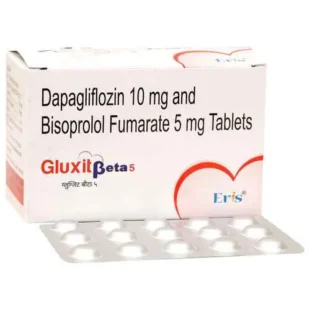
Ciroflux Infusion 10 ml
₹424.00
Check Delivery
🏥 Prescription Required
This product requires a valid prescription. You can upload your prescription during checkout or after placing your order.
Add to cart
Buy Now
Ciroflux Infusion 10 ml is an intravenous antibiotic infusion preparation designed to treat serious bacterial infections. It belongs to the fluoroquinolone group, and is typically used when oral therapy is not possible or when a more rapid and controlled systemic response is needed.
Indications (Uses)
Ciroflux Infusion may be prescribed for:
-
Severe infections of the lungs (for example pneumonia)
-
Urinary tract infections including complicated ones
-
Skin and soft tissue infections
-
Intra‐abdominal infections
-
Other systemic infections caused by bacteria susceptible to ciprofloxacin
Mode of Action
This medicine works by inhibiting bacterial DNA‐gyrase and topoisomerase IV enzymes that are essential for bacterial DNA replication and repair. By interfering with these enzymes, it prevents bacterial growth and helps the body eliminate the infection.
How to Use / Dosage
-
Administered intravenously via infusion (over a period decided by the physician)
-
Dose depends on severity of infection, patient’s kidney function, age, and weight
-
Treatment length is determined by response to therapy and the nature of the infection
Possible Side Effects
Common side effects include:
-
Pain, swelling or redness at the infusion site
-
Nausea, vomiting, or upset stomach
-
Headache or dizziness
-
Diarrhea
Less common / more serious effects may include:
-
Allergic reactions (rash, itching, swelling etc.)
-
Tendon problems (pain, swelling)
-
Changes in kidney or liver function
-
Effects in people with nervous system conditions
Precautions & Safety
-
Inform doctor if you have kidney or liver disease
-
Use with caution in older patients or those on other medications that affect tendons or the QT interval of the heart
-
Not usually first‐choice for mild infections—reserved for cases where bacteria are known to be susceptible or other treatments are inappropriate
-
During pregnancy or breastfeeding, the risks versus benefits must be evaluated
Missed Dose
Since this is an infusion given in hospital settings by health professionals, missed doses are rare. But if a dose is delayed, it should be given as soon as possible unless close to the next scheduled dose.
Vendor Information
- Address:
- No ratings found yet!
























































































































































Reviews
There are no reviews yet.